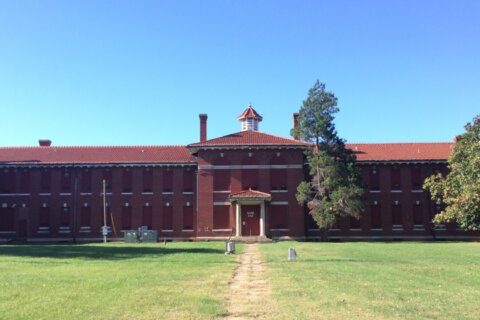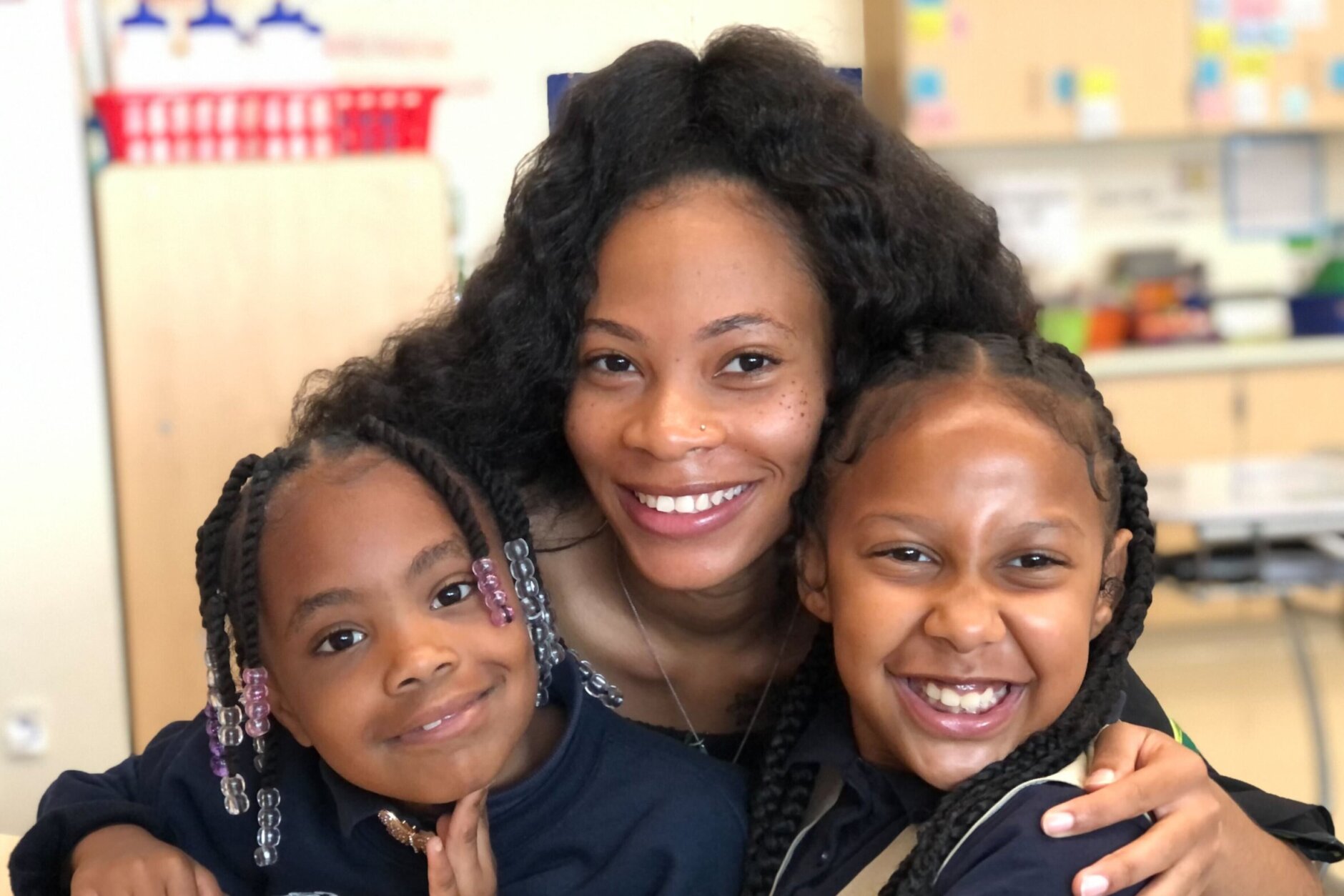
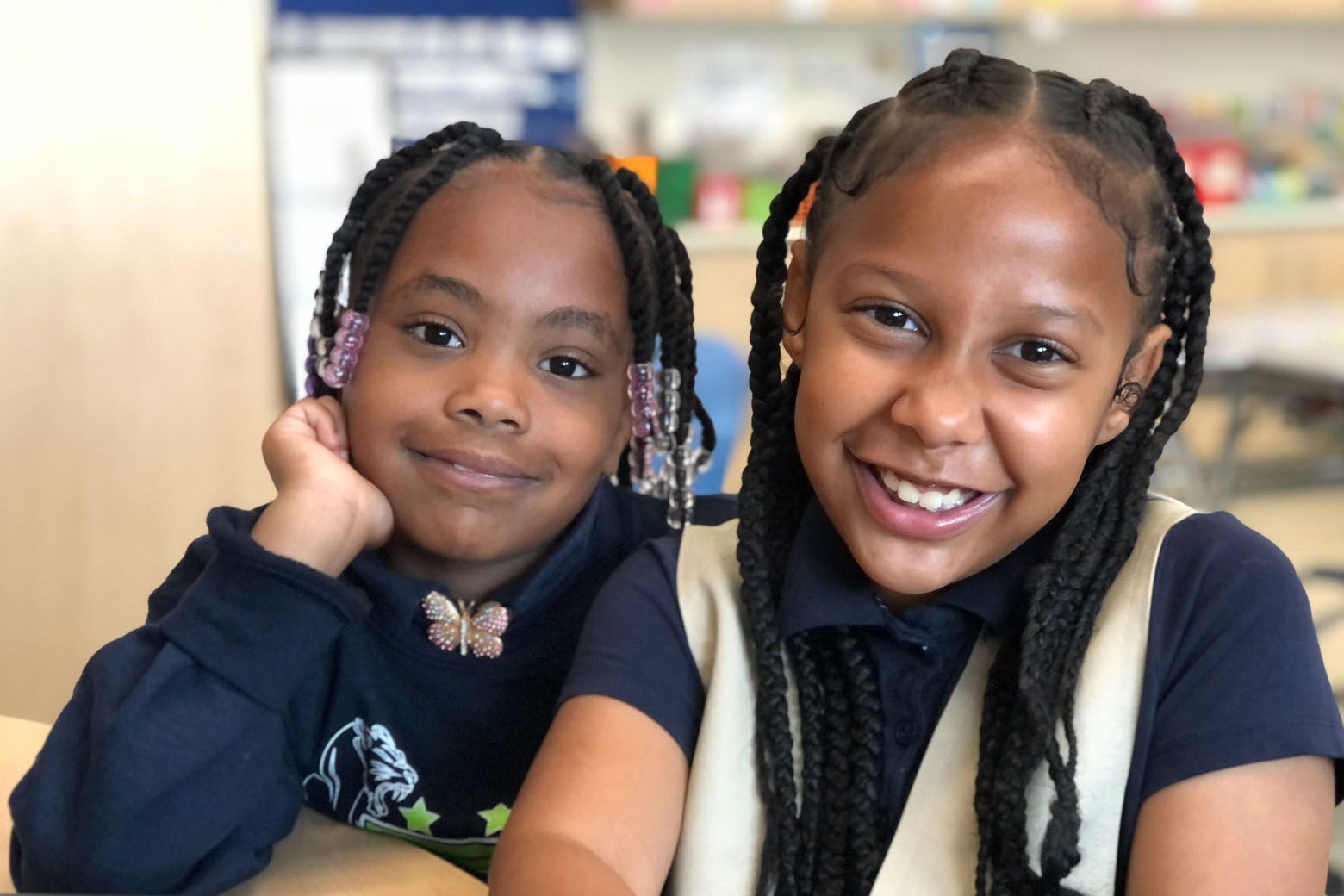
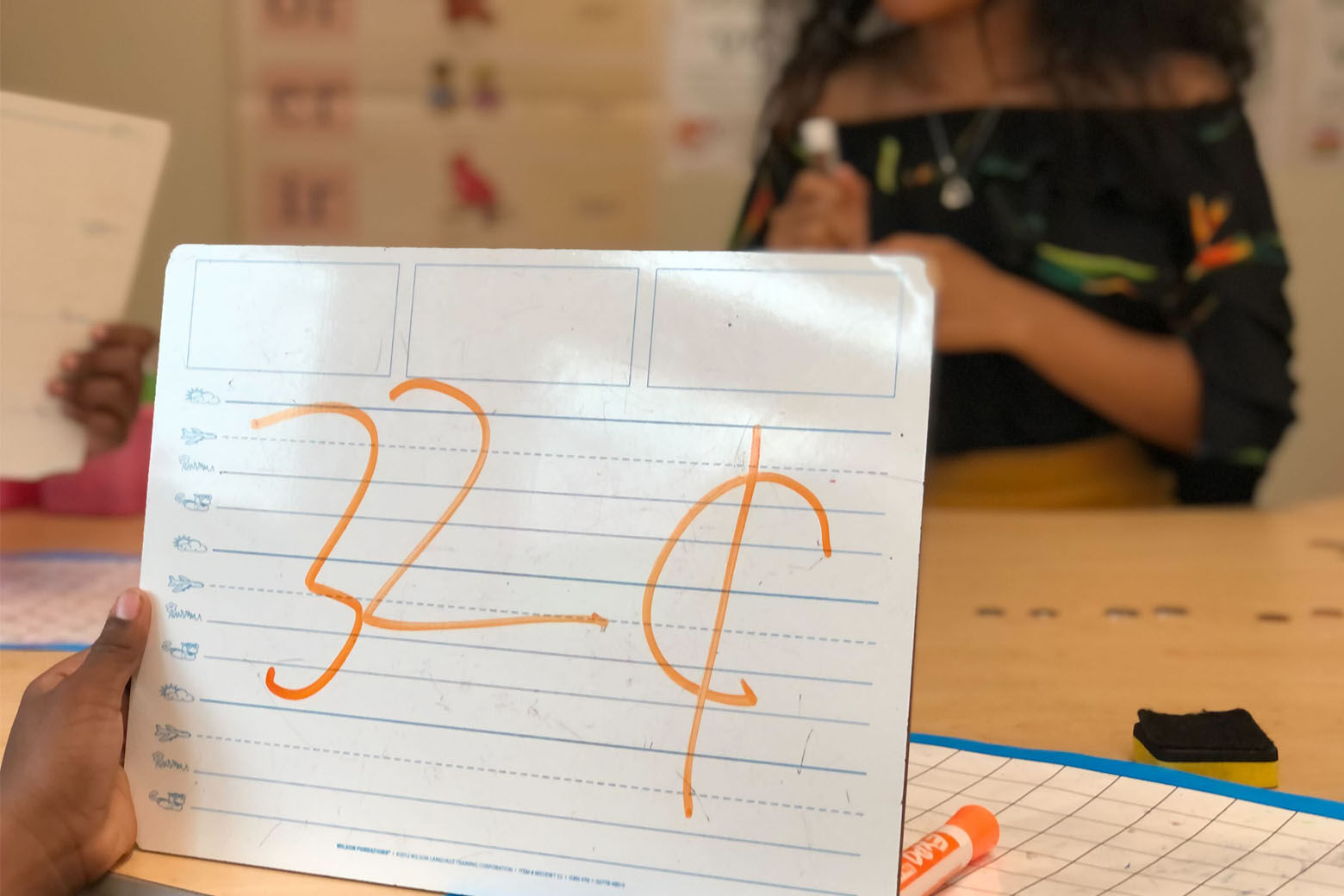
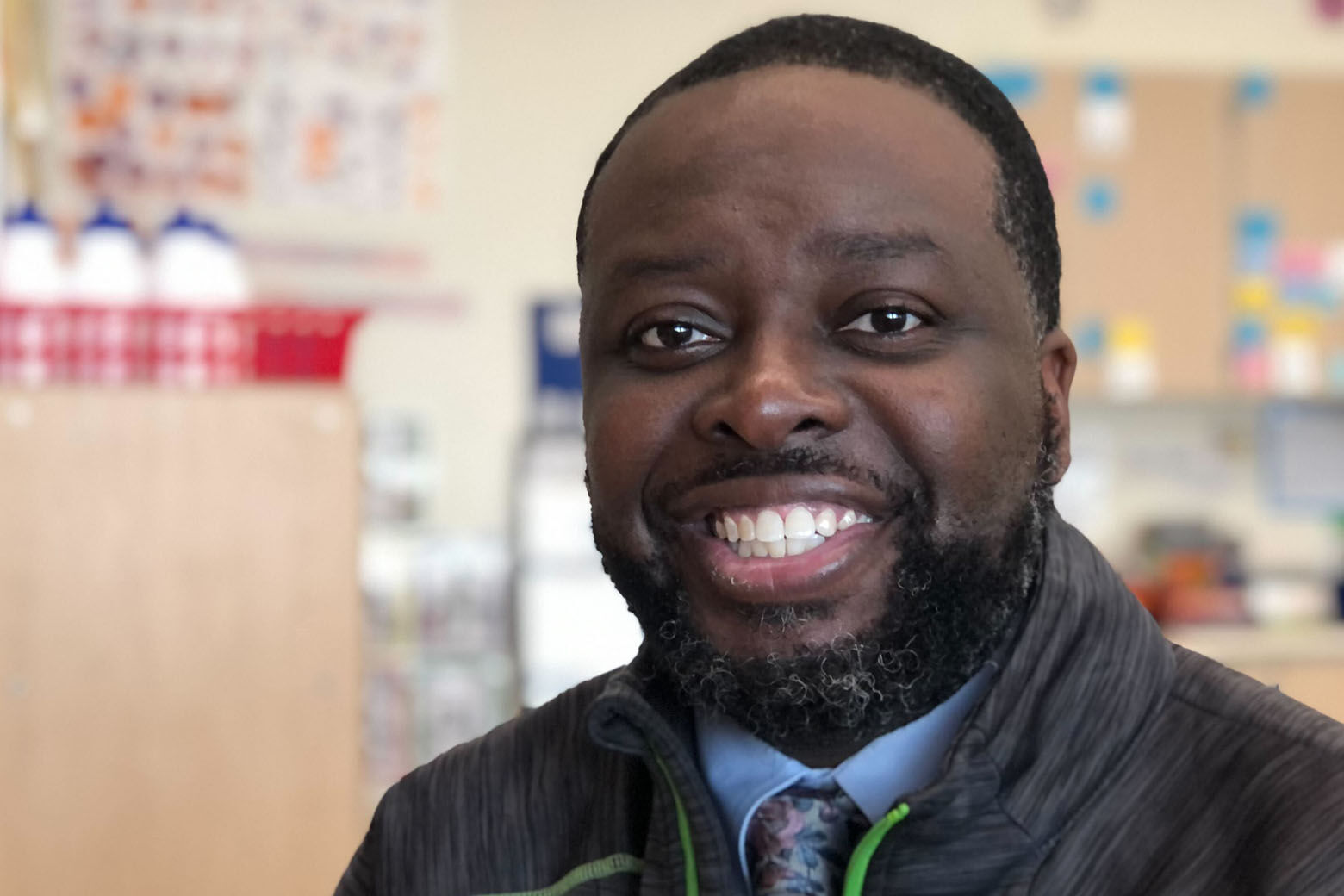
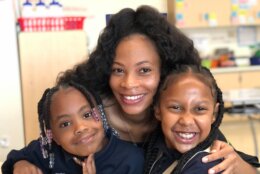


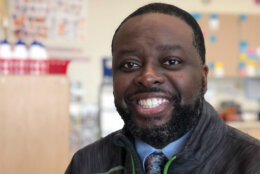
The end of the school year is close, and the signs are obvious at Southeast D.C.’s Stanton Elementary School, where fifth graders are preparing for their big day — promotion to middle school.
While summerlike weather sizzles outside, Jewel Cauley’s first-grade class is on task with a math lesson. Cauley, wrapping up her first year of teaching, sits with her students at a table, sliding coins together in groups and quizzing them.
“Name?” she asks, as she pushes a silver coin toward them on the workspace.
“Nickel!” they call out in unison.
“Worth?” she asks.
“Five cents!” comes the answer, in tones ranging from certainty to tentative.
She then asks students to calculate the combination of coins before them. “Be confident in your work,” she reminds them, before they show their answers on the whiteboards they hold in their hands.
WTOP visited Cauley’s class in October, and now months later, as the school year winds down, she seemed just as fresh and energetic as she did in her first weeks on the job.
“My first year of teaching has been great, I plan on coming back,” she said with a smile.
There have been challenges. Some students entered behind academically, with what Cauley said were social and emotional needs.
“I feel like COVID did have an effect on their behavior, but I feel like — they’re young,” she said, emphasizing the word young.
“They want to play, they want to draw,” she added, and they missed out on some of the basics children get in the first years of school — including how to interact in groups, how to line up for class changes in the hallway; all skills they’ve adopted quickly to in-person.
Now, students pick up instantly on cues, such as the phrase “all hands on deck,” which means it’s time to clean up their workspace and move on to the next task.
Cauley’s students have bonded with her. Jannah Crawford and Ashley Madison, both 7 years old, are quick to declare that Cauley remains “the best teacher.”
What makes Cauley a good teacher?
“Because she’s caring and she loves us,” Crawford said.
Cauley believes her students have made solid progress and said that’s the difference in-person learning makes. Anderson declared she loves reading, “and I’m about to read on a second-grader level,” she said with a shy smile.
Asked about the challenges of adapting to in-class teaching, in a year when educators across the country have reported feeling overwhelmed, underappreciated and simply exhausted, Cauley said she had to make lots of adjustments.
However, she said, the team structure that Stanton Elementary uses for teachers in earlier grades has helped.
On those days when things don’t go well, Cauley said, “Life happens!”
There are days, for instance, when a lesson plan that seemed to work on paper clearly isn’t going well — “And in the middle of the lesson, I have to improvise.”
She said then it’s a matter of “being quick on my feet,” and asking herself, “OK, what do I have to do to make sure my students understand this concept?”
Cauley has entered the teaching profession in a year when many veteran educators are either retiring early or deciding to leave.
A recent RAND Corporation survey showed that one in four teachers were considering leaving their jobs by the end of the year. A survey of National Education Association members showed dramatic numbers as well, with 55% of those surveyed indicating they were considering leaving or retiring sooner than planned, largely due to stressors tied to the pandemic.
Stanton Elementary Principal Harold McCray said he doesn’t have teacher vacancies at his school; rather, he said staff are staying and he works hard to support his teachers.
“We knew that coming back from COVID, students were not going to be used to the schedule. They were not going to be used to the expectations in the schoolhouse because they’ve been home.”
McCray said at the start of the year, interventions and added tutoring were built-in during the school day. Also, Saturday school was added to help students catch up.
Asked if putting in those extra hours — and Saturdays — were taking a toll by creating burnout among his staff, McCray said he’s not getting that feedback. But he said it’s in part due to his approach on letting teachers have a voice in the planning and operations around instruction.
“We have to be careful about what we’re asking our teachers to do,” he said.
McCray said he tries to take as much off their plates as possible.
“If I was doing this by myself as a one-man show, this would be a train wreck … I depend on them, and I think they know that,” McCray said.
Back in the hallway, some teachers working with the fifth graders on their upcoming promotion to middle school were coaching their students.
Inside Cauley’s classroom, Crawford sighed, ambivalent about the coming summer. She’d been looking forward to visiting cousins and heading to the pool, but said she’d miss seeing Cauley.
The bright side, she said, is that Cauley will be teaching her in second grade.
“When we see her in second grade, I’m going to hug her tight because I’m going to miss her!” Crawford said.



